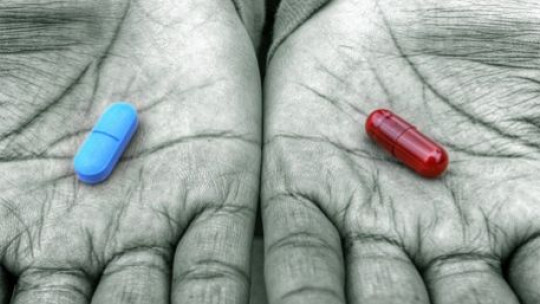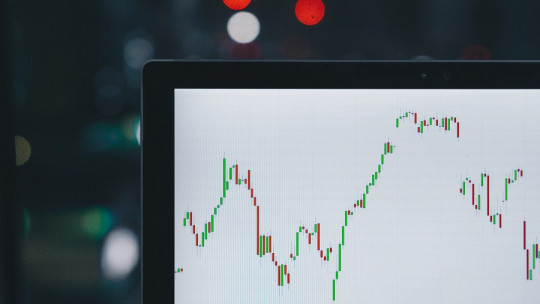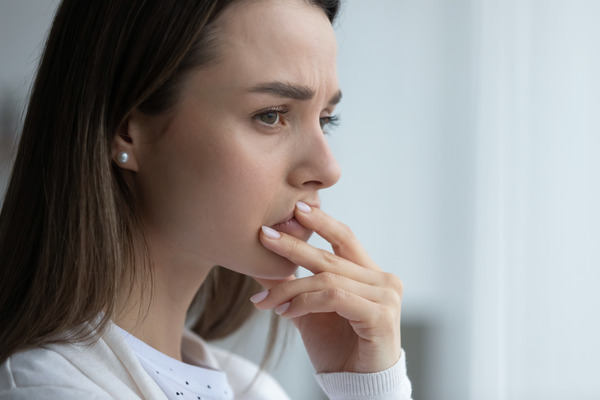In our daily lives, it is common for us to take medications and undergo different treatments in order to improve our health or overcome a specific problem. On more than one occasion we have heard about the advantages of some techniques that do not enjoy scientific recognition and yet seem to work for many people.
Both in these cases and in many other more recognized treatments, it is legitimate to ask if what we take or do really has a real effect on our health. In other words, is the treatment I am following really effective or does the improvement itself have another explanation? Perhaps we are facing a case of the placebo effect. Let’s see below what this means and how this phenomenon is taken into account in the clinical context.
What is the placebo effect?
We understand the placebo effect to be that positive and beneficial effect produced by a placebo. an element that by itself does not have a curative effect on the problem being treated by the mere fact of its application. That is, the substance or treatment does not have qualities that produce an improvement in the symptoms, but the fact that one is receiving a treatment causes the belief that it will improve, which in itself causes the improvement.
The consideration of placebo is not limited only to substances, but can also appear under psychological treatments, surgeries or other interventions.
In the case that by placebo we are referring to a substance, this can be a totally harmless element (a saline solution or sugar, for example) also called pure placebo, or a substance that does have a therapeutic effect for some disease or disorder but not for that which has been prescribed. In this second case we would be faced with a pseudoplacebo.
Its operation
The operation of this phenomenon is explained on a psychological level by two basic mechanisms: classical conditioning and expectations.
First of all, the patient who receives the placebo has the expectation of recovery depending on the learning history followed throughout their life, in which improvement generally occurs after following treatment.
These expectations condition the response to treatment, favoring the response to health recovery. (this fact has been demonstrated in the immune response). The greater the expectation of improvement, the greater the placebo effect, so the conditioning will be greater and greater. Of course, for it to work correctly the first step must be successful.
Other factors that influence this psychological effect
The placebo effect is also mediated by the professionalism and sense of competence projected by the person administering it, the context in which the intake is carried out, the type of problem being faced, and other characteristics such as cost, presentation, materials or rituals necessary to take it.
More expensive and more elaborate looking placebos tend to be more effective. For example, a sugar pill is more effective as a placebo if it is capsule-shaped than if it is lump-shaped. Somehow, the appearance of exclusivity causes expectations about its effectiveness to rise or fall in parallel with it.
The neurological bases of placebo
At a neurophysiological level, it has been shown that the application of placebo stimulates the frontal cortex, the nucleus accumbens, the gray matter and the amygdala, activating the dopaminergic and (to a lesser extent) the serotonergic pathways. This activation causes a feeling of reward and relaxation that coincides with the improvement perceived by patients.
Patients with pain, somatic symptoms, Parkinson’s, dementia or epilepsy have benefited from the use of placebos in research settings, improving their situation. The effects are especially marked in those suffering from pain, having a greater effect the greater the placebo and the initial pain.
However, the mechanism of action of the placebo effect remains partly a mystery. The intriguing thing about this process is that it seems to be a phenomenon in which abstract thinking influences very basic and primitive mental processes, which act in a similar way in non-human animals.
For example, it is difficult to explain that a belief can interfere with something like pain processing, a biological mechanism that appeared more than 100 million years ago in the evolutionary chain that leads to our species and that has been consolidated over time. because of its great usefulness for our survival. However, evidence shows that suggestion produced, for example, through hypnosis, is capable of making this sensation significantly more
Contexts of appearance and application
Once we have briefly explored what the placebo effect is and how it works, we should ask ourselves: where this phenomenon is usually actively applied.
As we will see, the placebo effect is especially used in research, although it is also occasionally linked to clinical practice.
At the research level
The treatments used in clinical practice must be tested to verify their real effectiveness. For this purpose, the use of a case-control methodology is common, in which two groups of individuals are established. One of the groups is given the treatment in question, and the second, known as the control group, is given a placebo..
The use of a placebo in the control group allows us to observe the effectiveness of the treatment in question, since it allows us to verify whether the differences between pre-treatment and post-treatment perceived in the group that receives the treatment are due to it or to other factors external to it. .
At a clinical level
Although it involves a series of ethical conflicts, The placebo effect has sometimes been applied in clinical practice. The most frequently given reasons have been the patient’s unjustified demand for medications, or the need to calm them down, or the exhaustion of other therapeutic options.
Likewise, many alternative and homeopathic therapies benefit from this effect, which is why, despite not having mechanisms of action related to truly effective effects, they sometimes result in some effectiveness.
Relationship with other effects
The placebo effect is related to other similar phenomena, although there are notable differences between them.
Hawthorne effect
The placebo effect can sometimes be confused with other types of effects. An example of this is the confusion with the Hawthorne effect. The latter refers to the modification of behavior when we know we are observed or evaluated (for example, when there is someone analyzing our actions, such as a superior at work or simply an external observer in a class), without the possible improvement in functioning being due to any cause other than the measurement itself.
The similarities with the placebo effect are found in the fact that in general there is a perceptible improvement in the state and vital functioning of the individual. However, the placebo effect is something completely unconscious, and occurs due to the belief that an improvement is really going to occur following the application of a supposed treatment, while the Hawthorne effect is a form of reactivity to the knowledge that is measuring or evaluating a characteristic, situation, or phenomenon.
nocebo effect
The placebo effect has a counterpart, known as nocebo effect. In this effect, the patient suffers a worsening or side effect due to the application of a treatment or a placebo. this being inexplicable due to the mechanism of action of the medication.
Although there is less research on this phenomenon since it is less frequent, it can be explained by the same expectation and conditioning mechanisms as the placebo: it is expected that a negative symptom will occur. An example of this is the occurrence of secondary symptoms that patients have seen in a leaflet despite the fact that there are no biological threats.
Applied to research, the nocebo effect is also what makes studies based on replacing the control group with one of patients on the waiting list not entirely valid, since this psychological phenomenon makes these patients tend to feel worse than what they would do if they were not waiting for treatment, keeping in mind that nothing has yet been administered to cure them.
It must be taken into account that research on the nocebo effect is complicated, given that it raises ethical dilemmas, and therefore it is studied indirectly from phenomena that exist outside any research program.
Pygmalion effect or self-fulfilling prophecy
The Pygmalion effect has a clear relationship with both the placebo effect and the previous ones. This effect is based on the fact that the expressed expectation that a certain situation or phenomenon will occur leads to the subject ending up carrying out actions that lead to the initially expected situation. Thus, its functioning is very similar to that of the placebo effect at a cognitive level, in which the belief that one will improve causes the improvement itself.
As a type of placebo effect, this phenomenon leads people to feel better due to the expectation that this is what is expected of them. In this way, an idea leads to the emergence of a new material reality in accordance with the idea that (in part) caused it.
Paying for ineffective therapies does not count
It must be taken into account that the simple act of paying for a session of services offered as therapy does not usually generate a placebo effect. This means that pseudotherapies or ineffective therapies cannot be promoted under the ethical pretext that they produce a placebo effect.
For example, homeopathy, which statistically does not provide any type of benefit to patients, does not give people the illusion that they are introducing something healing into their body. For this psychological phenomenon to work, other conditions must be met that have nothing to do with the pure nature of the transaction reached with the professional.
To conclude
It must be taken into account that The placebo effect can be found even in treatments with proven effectiveness. A clear example can be seen in an immediate recovery or improvement after taking a medication, such as an antidepressant. Although the effectiveness of the treatment can be proven, these medications generally take weeks to be effective, so a very early improvement may be due to the placebo effect. In this way, both this phenomenon and the healing produced through the effectiveness mechanism of psychotherapy or a drug can overlap.
It is also important to keep in mind that the placebo effect it’s not imaginary ; There is actually a real improvement in the mental or even physical state (the immune and neuroendocrine system especially), that is, in many cases it is objectively verifiable and generates physical changes, although generally not radical.
On the other hand, although the usefulness of this effect has been demonstrated in some medical treatments, The possibility of perverse use must be taken into account. being used with the objective of obtaining economic benefit in a multitude of “miracle” products.









